How Much Does an AC Tune-Up Cost?
Regular AC tune-ups ensure your system runs efficiently, extends its lifespan, and prevents costly breakdowns. The cost of an AC tune-up varies based on service level, system type, and location. On average, homeowners can expect to pay anywhere from $80 to $550 for an AC tune-up, depending on the level of service provided. Below is a detailed breakdown of each service level and what it includes.
Average Cost of an AC Tune-Up
An AC tune-up typically costs between $80 and $550, depending on factors like service depth, technician expertise, and any required minor repairs. Most homeowners pay around $150 to $300 for a standard AC tune-up.
Here’s a cost breakdown based on service type:
- Basic Check-Up: $80–$300
- Full Service: $300–$450
- Premium Inspection: $450–$550
Additional services such as refrigerant refills, deep cleaning, or parts replacement may increase costs. Investing in routine maintenance can help homeowners save on expensive repairs and energy bills over time.
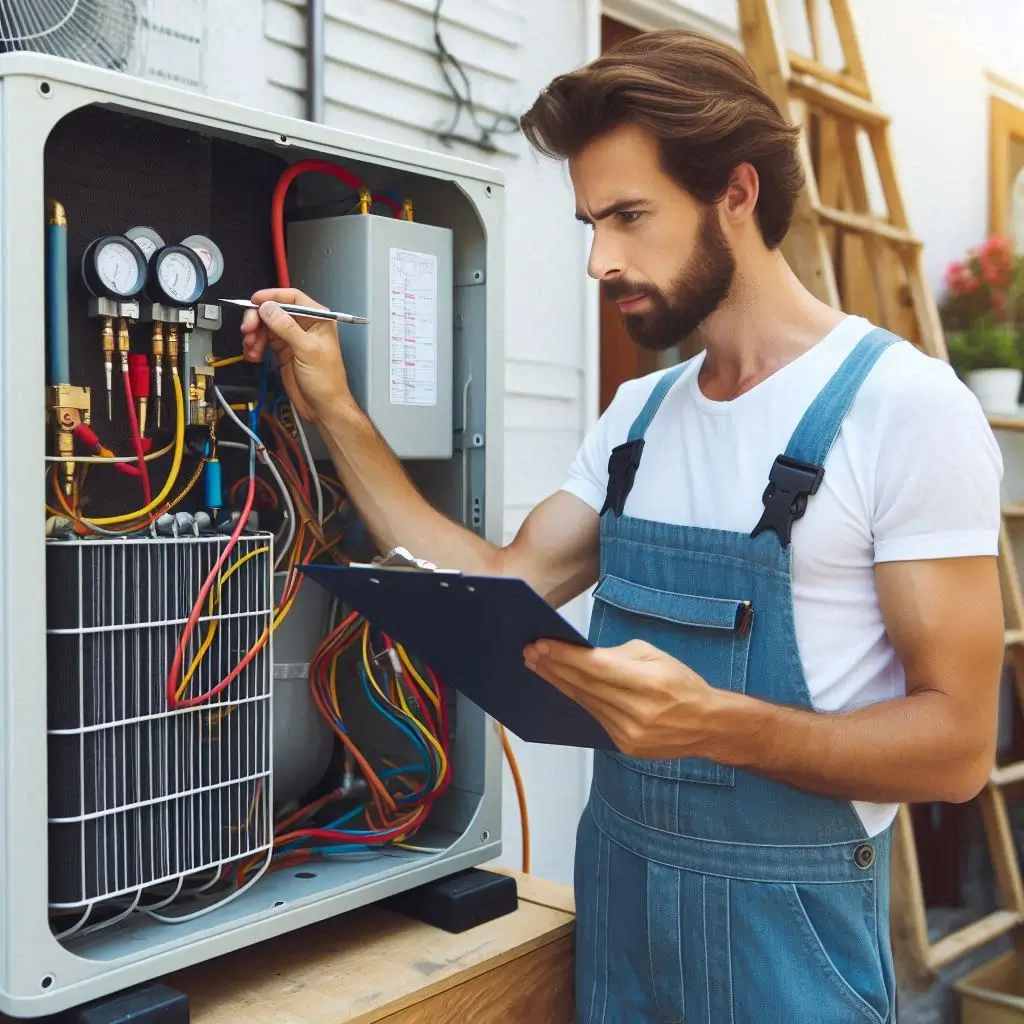
Cost by Service Level
The level of service you choose impacts the final price. Below are the three primary AC tune-up service levels and what they include.
Quick Check ($80–$300)
A Quick Check is the most basic AC tune-up service, ideal for homeowners looking to perform routine system maintenance without additional deep cleaning or repairs.
What’s Included?
- Visual inspection of the outdoor unit and components.
- Checking and replacing air filters if necessary.
- Testing thermostat accuracy and recalibrating if needed.
- Inspecting refrigerant levels for any signs of leakage.
- Basic electrical inspection, including tightening connections.
Who Needs This? Homeowners with newer systems or those who have had a recent tune-up and need a quick check to ensure optimal performance.

Full Service ($300–$450)
A Full Service Tune-Up includes everything in the Quick Check plus thorough system diagnostics and cleaning. This is recommended for systems that have not been serviced in over a year.
What’s Included?
- Cleaning the evaporator and condenser coils to improve efficiency.
- Lubricating moving parts, such as fan motors and bearings.
- Flushing the condensate drain line to prevent clogs and water damage.
- Testing blower motor performance to ensure proper airflow.
- Checking ductwork for air leaks and potential efficiency losses.
- Inspecting and tightening all electrical components for safety.
Who Needs This? Homeowners with an AC unit older than five years or those experiencing decreased cooling efficiency.
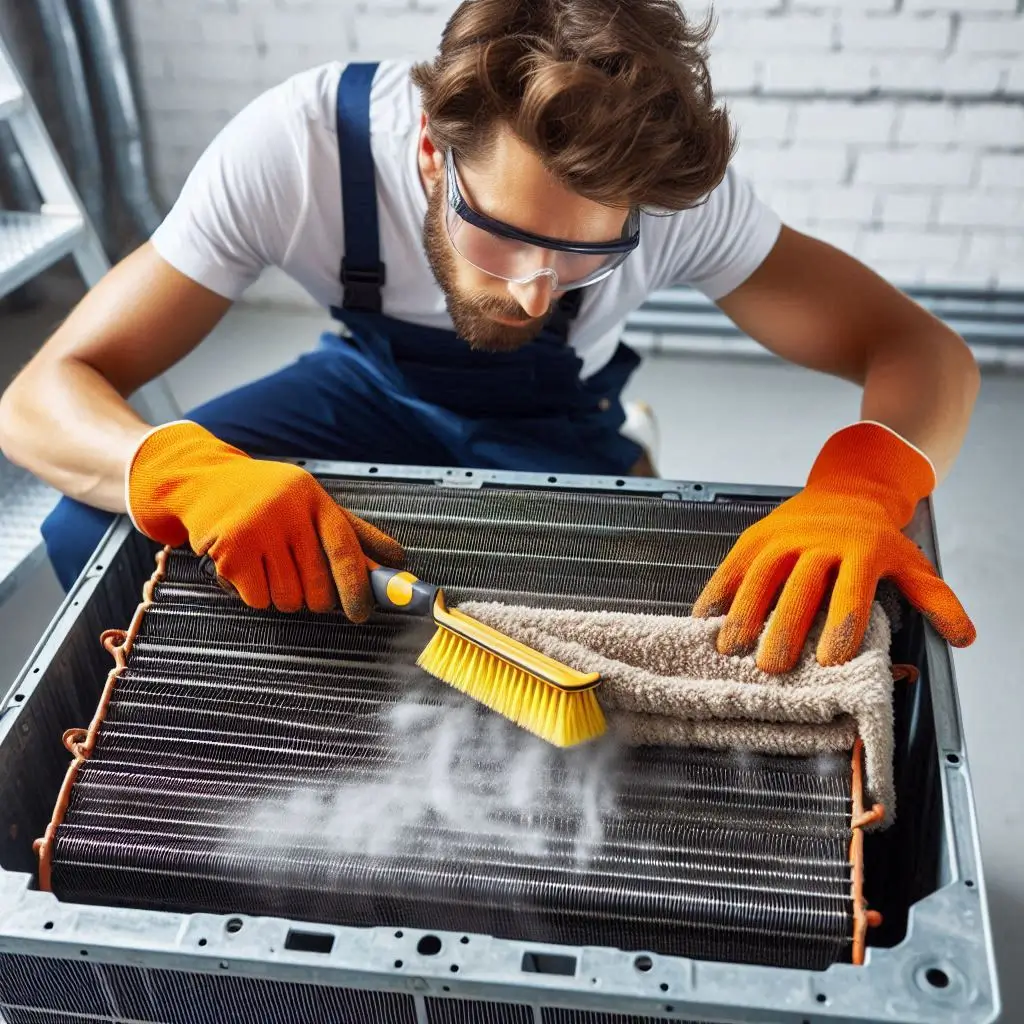
Premium Inspection ($450–$550)
A Premium Inspection is the most comprehensive AC tune-up, ensuring peak performance and identifying potential issues before they lead to costly breakdowns.
What’s Included?
- Everything from the Full Service Tune-Up plus:
- Comprehensive refrigerant analysis to detect leaks and refill if needed.
- Performance testing to check system efficiency under various conditions.
- Duct system pressure testing to detect hidden air leaks.
- Calibrating the entire HVAC system for peak energy efficiency.
- Infrared inspection of electrical connections to prevent overheating issues.
Who Needs This? Homeowners with older systems, those experiencing recurring HVAC issues, or those preparing for extreme seasonal temperatures.
Why Regular AC Tune-Ups Matter
Scheduling routine AC maintenance prevents breakdowns, improves energy efficiency, and helps you avoid high energy bills. Choosing the right AC tune-up service level depends on your system’s age, condition, and past maintenance history.
Regular tune-ups not only extend your AC’s lifespan but also provide peace of mind knowing that your cooling system is operating at peak performance.
Factors That Affect AC Tune-Up Cost
Several key factors influence the cost of an AC tune-up, including the type of unit, its size, age, brand, warranty status, ductwork condition, and accessibility. Understanding these elements helps homeowners anticipate their expenses and make informed maintenance decisions.
Unit Type
The type of air conditioning system significantly affects AC tune-up costs due to variations in components, maintenance complexity, and labor requirements.
Window Unit
Cost Range: $50–$150
A window air conditioner is the most affordable system to maintain since it’s compact and has fewer components. However, regular cleaning of filters, coils, and drainage channels is necessary to maintain performance.
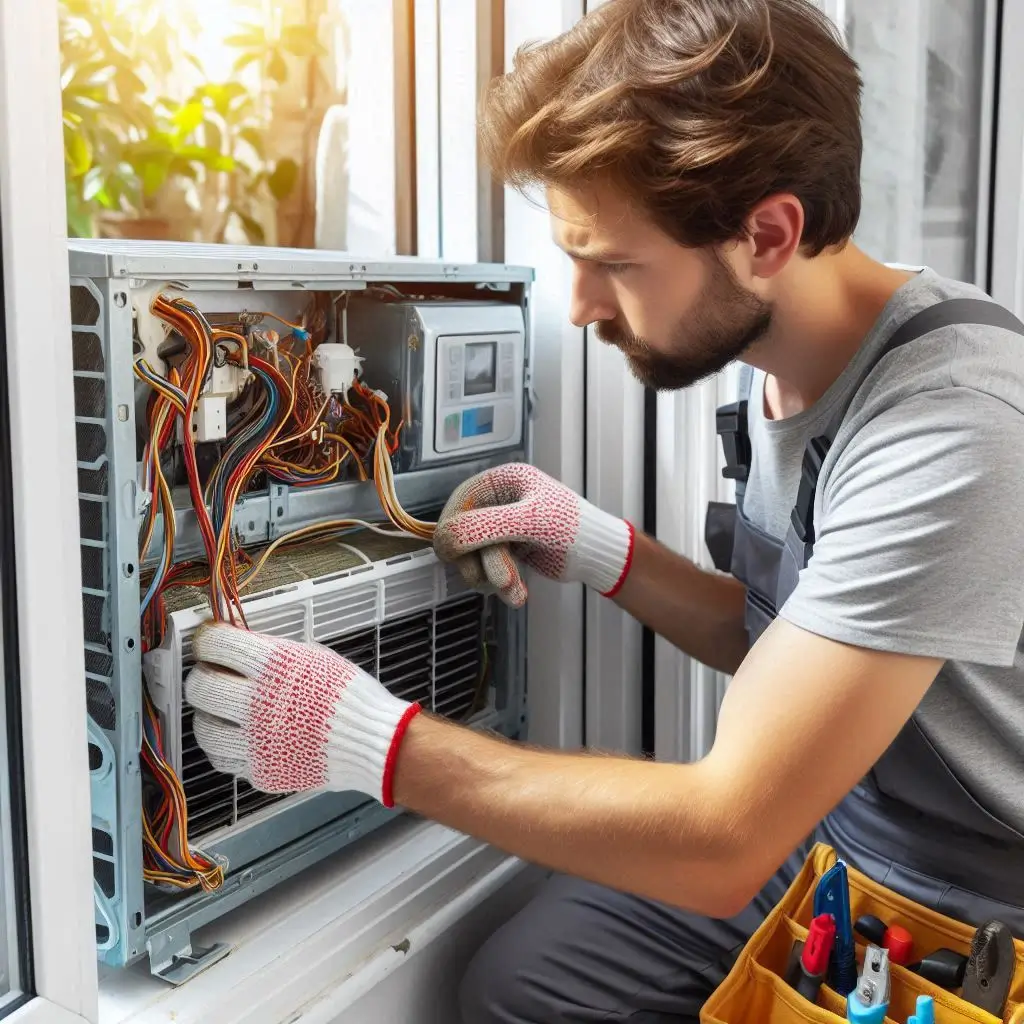
Central Air
Cost Range: $150–$450
A central air conditioning system is more complex than a window unit, involving ductwork, an outdoor condenser, an evaporator coil, and a blower motor. The cost varies depending on:
- Size of the system (measured in tons).
- Age of the unit and whether it requires refrigerant adjustments.
- Ductwork inspection and any necessary cleaning or sealing.
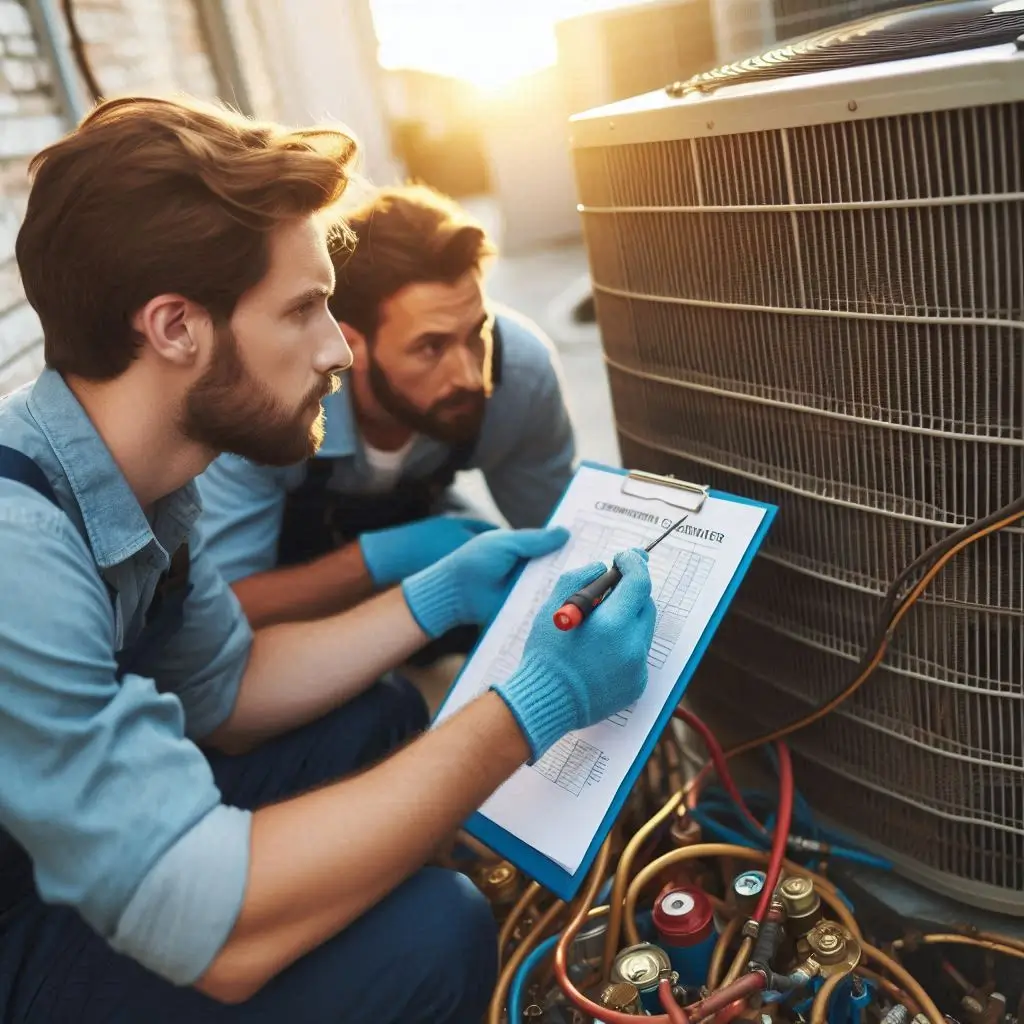
Heat Pump
Cost Range: $200–$500
A heat pump serves both heating and cooling functions, requiring additional maintenance for optimal year-round performance. Key cost factors include:
- Checking reversing valve functionality (essential for switching between heating and cooling).
- Inspecting refrigerant levels and defrost controls.
- Ensuring thermostat calibration for proper efficiency.
Mini-Split
Cost Range: $150–$400
A ductless mini-split system requires tune-ups for both the indoor air handlers and the outdoor condenser. Factors influencing cost include:
- Number of indoor units being serviced.
- Cleaning and inspecting filters, coils, and drainage lines in multiple zones.
- Checking for proper airflow balance across all installed units.

Unit Size and System Age
Unit Size
Larger AC units (measured in tons) require more labor and refrigerant, increasing tune-up costs. A 2-ton system costs less to maintain than a 5-ton system due to higher refrigerant requirements and more extensive coil cleaning.
System Age
Older AC units (10+ years) tend to require more frequent repairs, part replacements, and efficiency adjustments. These factors raise the cost of a routine tune-up compared to servicing a newer unit.
Brand and Warranty Considerations
- Premium brands like Trane, Lennox, and Carrier may have higher service costs due to specialized components and specific maintenance protocols.
- Warranty coverage can reduce costs significantly. If the unit is still under manufacturer warranty, homeowners may only pay for labor rather than parts.
Ductwork Condition and Accessibility
- Duct Leaks or Blockages – If the ductwork has leaks, clogs, or insulation damage, additional repairs or sealing may be necessary, adding to the cost.
- Unit Location & Accessibility – Hard-to-reach attic or rooftop AC units require more labor, leading to higher tune-up prices than easily accessible systems.
How Repairs Impact AC Tune-Up Pricing
An AC tune-up is primarily a preventive maintenance service, but during the inspection, technicians often discover underlying issues that require repair. These necessary fixes can increase the overall cost of the tune-up, depending on the complexity and severity of the problem.
Common Repairs During a Tune-Up
During a routine AC tune-up, technicians inspect and service key components of the system. If they identify any malfunctions or wear and tear, they may recommend repairs, which add to the overall cost. Some of the most common repairs include:
Refrigerant Recharge
Cost: $100–$600
- If an AC unit is low on refrigerant, the technician will recharge (refill) the refrigerant to the recommended level.
- Low refrigerant levels often indicate a leak, which requires sealing and may significantly increase repair costs.

Capacitor or Contactor Replacement
Cost: $150–$400
- The capacitor helps start the AC motor, while the contactor controls the flow of electricity.
- If either fails, the air conditioner may not start or cool properly, requiring immediate replacement.
Thermostat Repair or Replacement
Cost: $75–$300
- A faulty thermostat can cause inconsistent cooling, system short cycling, or complete failure to turn on.
- A technician may recalibrate, repair, or replace the thermostat depending on the issue.
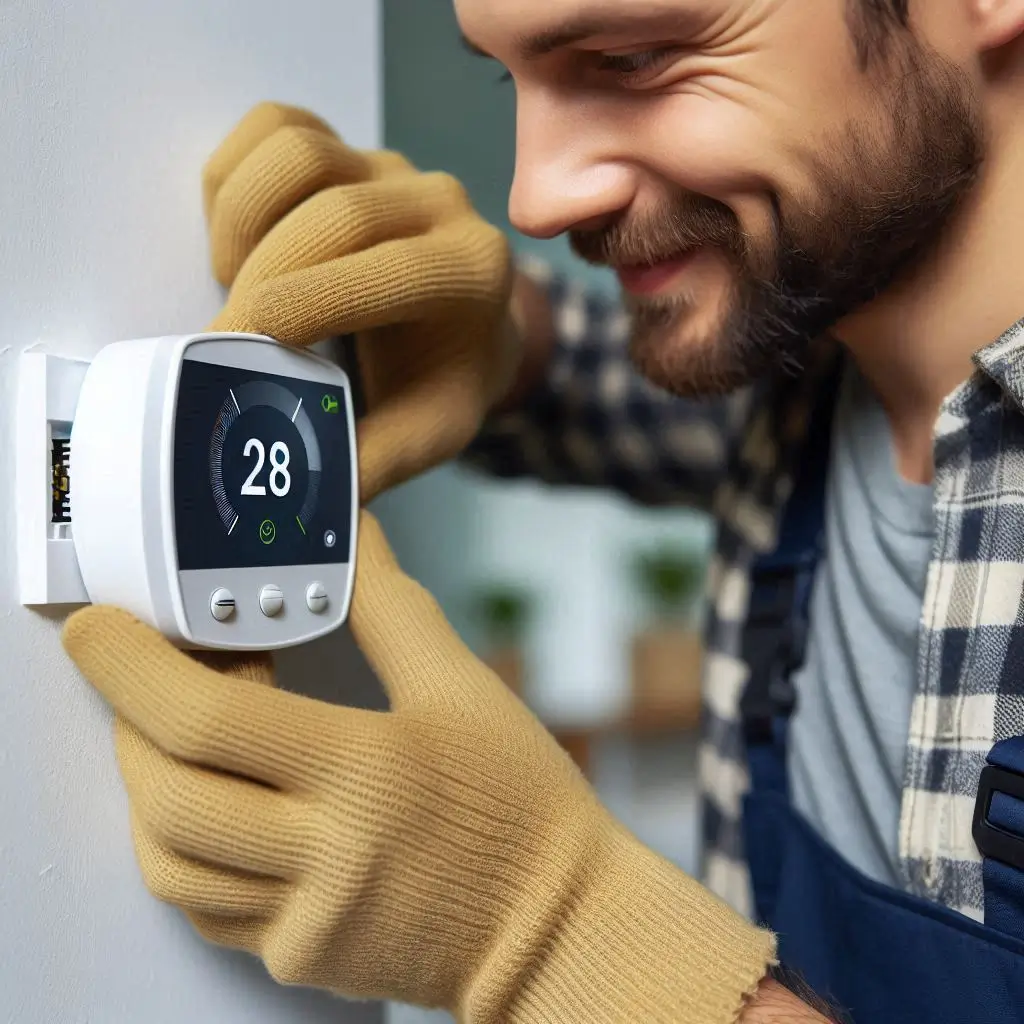
Clogged Drain Line Cleaning
Cost: $75–$250
- Over time, dirt and mold clog the AC drain line, causing water leaks and reduced efficiency.
- If left unchecked, it can lead to water damage and mold growth.
Blower Motor Repair
Cost: $300–$800
- The blower motor pushes cooled air through the ductwork.
- A failing motor results in poor airflow and reduced cooling performance.
- Repairs may involve lubricating, replacing worn-out bearings, or installing a new motor.

How Minor vs. Major Repairs Affect Cost
Not all repairs add the same amount to an AC tune-up cost. Understanding whether a repair is minor or major can help homeowners budget for potential expenses.
Minor Repairs ($50–$300)
These are low-cost fixes that usually involve simple part replacements or cleaning. Examples include:
- Replacing dirty air filters
- Replacing capacitors or contactors
- Cleaning drain lines
- Recalibrating thermostats
Impact on Tune-Up Pricing:
- Minor repairs can slightly increase the total tune-up cost, but they help prevent bigger issues from developing.
Major Repairs ($300–$1,500+)
More significant issues require higher repair costs due to expensive components and increased labor time. Examples include:
- Compressor failure ($1,000–$3,000)
- Blower motor replacement ($500–$1,500)
- Refrigerant leak repair ($500–$1,200)
Impact on Tune-Up Pricing:
- Major repairs can significantly increase the total cost.
- Some homeowners opt for AC replacement instead of expensive repairs, depending on the system’s age.
What’s Included in an AC Tune-Up?
An AC tune-up is an essential maintenance service designed to keep your air conditioner running efficiently, reduce energy consumption, and extend the system’s lifespan. During a tune-up, HVAC technicians perform a series of inspections, cleanings, and adjustments to ensure optimal performance.
Regular maintenance not only prevents unexpected breakdowns but also helps homeowners save on repair and energy costs in the long run. Below is a detailed breakdown of what is typically included in an AC tune-up and additional services that may increase the overall cost.
Standard AC Tune-Up Checklist
A standard AC tune-up consists of several key steps, all aimed at ensuring that the system functions properly. HVAC professionals inspect, clean, and optimize the unit for peak efficiency.
1. Air Filter Inspection and Replacement
Why It’s Important:
- A dirty air filter reduces airflow, forcing the system to work harder and increasing energy consumption.
- Technicians check and replace or clean the filter as needed.
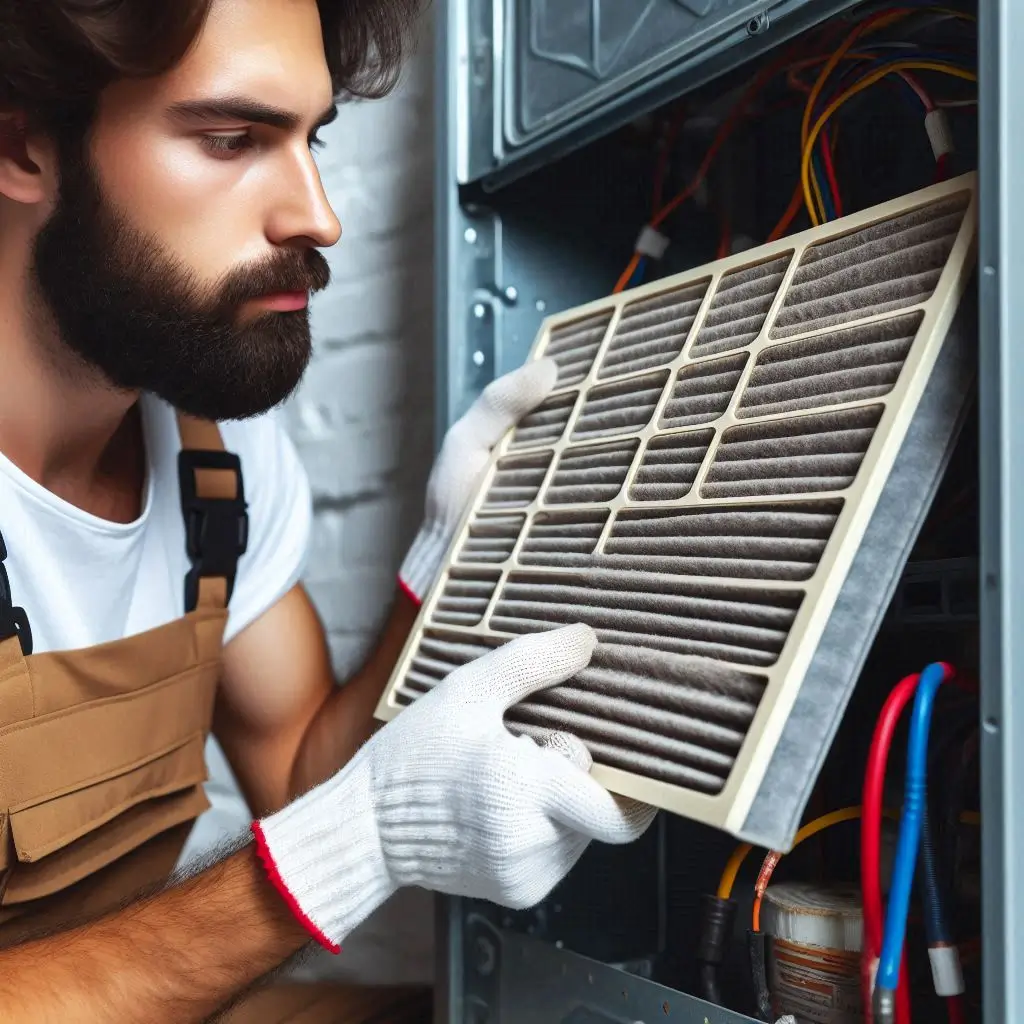
2. Cleaning the Evaporator and Condenser Coils
Why It’s Important:
- Dust and debris reduce heat transfer efficiency, making the AC unit work harder.
- Cleaning these coils improves cooling performance and prevents system overheating.
3. Checking and Topping Off Refrigerant Levels
Why It’s Important:
- Low refrigerant levels indicate a leak or insufficient charge, leading to poor cooling performance.
- Technicians measure refrigerant levels and recharge the system if necessary.

4. Inspecting the Thermostat for Accuracy
Why It’s Important:
- A malfunctioning thermostat can cause temperature inconsistencies and higher energy bills.
- Technicians ensure the thermostat accurately regulates indoor temperature.
5. Lubricating Moving Parts
Why It’s Important:
- Fans, motors, and other mechanical parts require proper lubrication to prevent wear and tear.
- Lubrication reduces friction, minimizing energy consumption and extending component life.
6. Checking Electrical Connections
Why It’s Important:
- Loose or faulty electrical connections can cause short circuits, system failures, or safety hazards.
- Technicians tighten and test all electrical components.

7. Testing System Performance
Why It’s Important:
- The AC unit is tested in various modes to ensure proper cooling performance.
- Technicians identify any potential issues before they turn into major problems.
Additional Services That May Increase Costs
Some AC units require extra maintenance or repairs beyond a standard tune-up. These additional services can increase the total cost but are essential for long-term efficiency.
1. Ductwork Inspection and Cleaning
Why It’s Important:
- Dust and debris buildup in air ducts reduce airflow efficiency and affect indoor air quality.
- Cleaning the duct system ensures better air circulation and reduced allergens.
- Additional Cost: $300–$1,000 (depending on duct length and condition).
2. Blower Motor Adjustment or Replacement
Why It’s Important:
- The blower motor pushes air through the ducts, and if it’s dirty or failing, airflow is compromised.
- A full blower motor replacement can be costly but is necessary for severe wear and tear.
- Additional Cost: $150–$700.
3. Refrigerant Leak Repair
Why It’s Important:
- Leaks reduce cooling efficiency and can damage the compressor.
- If a leak is detected, it must be sealed before refilling the refrigerant.
- Additional Cost: $200–$1,500 (depending on leak severity).
4. Coil Fin Straightening
Why It’s Important:
- Bent coil fins restrict airflow, leading to reduced cooling performance.
- Technicians use a coil fin comb to realign them.
- Additional Cost: $50–$250.
When Should You Schedule an AC Tune-Up?
Scheduling an AC tune-up at the right time ensures optimal performance, prevents sudden breakdowns, and helps you save on energy costs. The timing of your maintenance can significantly impact pricing and service availability. In this guide, we’ll explore the best time of year for an AC tune-up and how seasonal demand affects pricing.
Best Time of Year for an AC Tune-Up
Timing your AC maintenance strategically can help you avoid peak-season rushes, ensure efficient cooling, and potentially lower service costs.
1. Spring: The Ideal Time for an AC Tune-Up
Why Spring Is the Best Season:
- Prepares your AC for summer: The highest cooling demand occurs in summer, so tuning up the unit beforehand ensures it’s ready to handle the heat.
- Lower service costs: Since spring is a shoulder season (between extreme temperatures), HVAC companies often offer discounts and have more flexible scheduling.
- Early issue detection: If your AC has any hidden problems, they can be fixed before summer starts, preventing unexpected breakdowns.

2. Fall: A Secondary Window for Maintenance
Why Fall Is a Good Alternative:
- If you missed your spring tune-up, fall is the next best time to ensure your AC is in top shape for the following year.
- Mild temperatures mean less stress on HVAC systems, allowing technicians to work efficiently.
- Lower repair costs: Since AC repair demand is lower in fall, technicians may offer better rates on any necessary fixes.
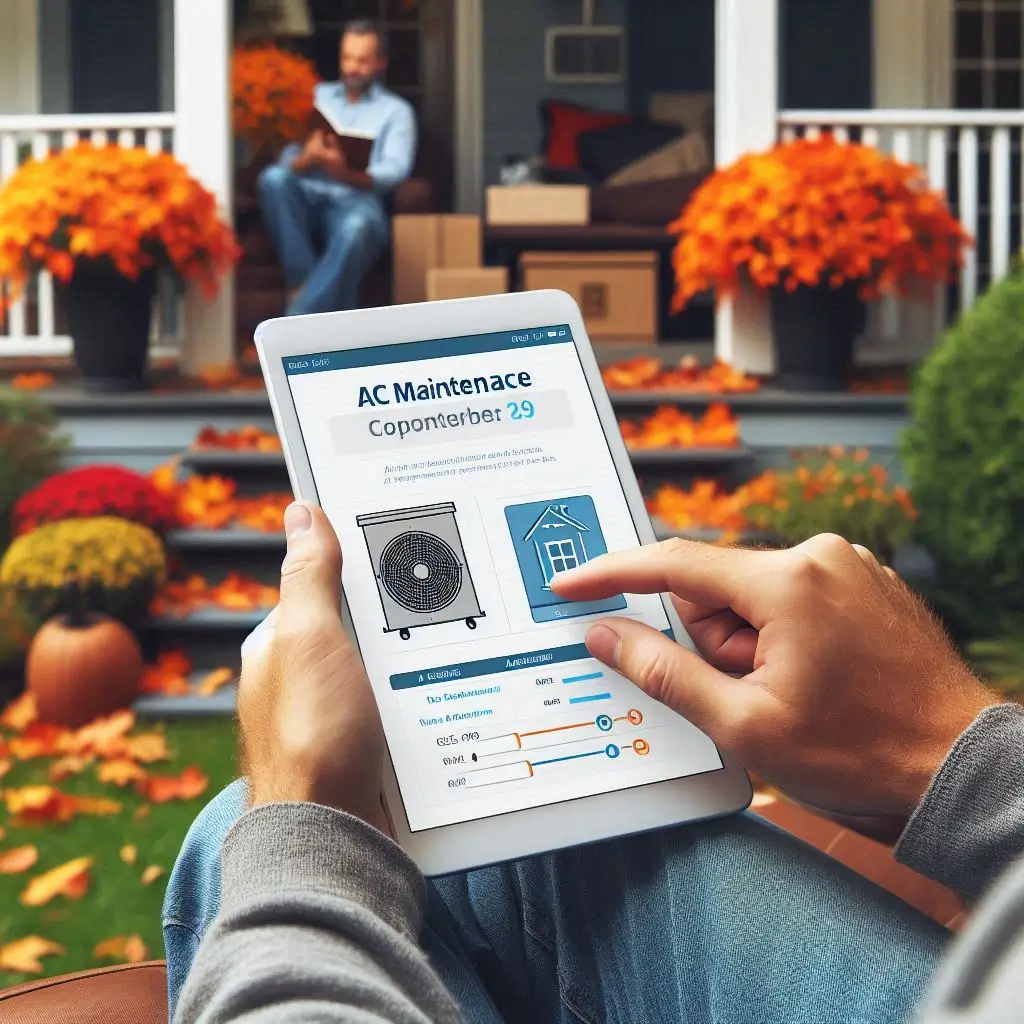
3. Avoiding Summer and Winter Rush
Why Summer Is a Bad Time for a Tune-Up:
- High demand: HVAC companies are busiest in summer, handling urgent AC repairs and emergency breakdowns.
- Higher costs: Since technicians are in high demand, you may pay premium rates for services.
- Limited availability: Scheduling an appointment can take longer, increasing the risk of going without AC during extreme heat.
Why Winter Is Less Ideal:
- While winter may seem like a low-demand time, many HVAC companies focus on heating system maintenance, making AC servicing less of a priority.
- Cold weather affects diagnostics: Testing an AC system properly requires warm outdoor temperatures, which winter may not provide.

How Seasonal Demand Affects Pricing
The cost of an AC tune-up varies depending on the time of year due to supply and demand dynamics.
1. High Demand = Higher Prices (Summer & Winter)
- During peak seasons (summer for AC, winter for heating), HVAC companies experience a surge in service requests.
- Emergency calls and urgent repairs take priority, often leading to higher service rates due to increased labor demand.
2. Off-Peak = Lower Prices (Spring & Fall)
- In off-peak months, HVAC companies often run promotions and discounts to encourage bookings.
- Technicians have more availability, leading to quicker response times and potential savings on tune-ups.
3. Early Booking Discounts
- Some HVAC companies offer early bird specials for customers who book tune-ups before peak season hits.
- Scheduling an AC tune-up in advance ensures a lower price and avoids last-minute service delays.
Can You Perform an AC Tune-Up Yourself?
Regular AC tune-ups are essential to maintain efficiency, longevity, and energy savings. Many homeowners wonder whether they can perform AC maintenance themselves or if they should rely on a professional HVAC technician. While basic cleaning and inspections can be handled as a DIY task, a full AC tune-up requires expertise to ensure long-term system health.
In this guide, we’ll compare DIY vs. professional AC tune-ups and explore the risks of skipping a professional inspection.
DIY vs. Professional AC Tune-Ups
Homeowners can perform some basic AC maintenance tasks, but certain tune-up procedures require professional expertise to ensure optimal system performance.
1. DIY AC Maintenance: What You Can Do
Replace or Clean the Air Filter
- Frequency: Every 1-3 months (depending on usage and filter type).
- A clogged filter reduces airflow and forces your AC to work harder, increasing energy bills and decreasing efficiency.
Clean the Condenser Coils
- Outdoor condenser coils accumulate dust, dirt, and debris, which can hinder heat dissipation.
- Cleaning with a coil brush or hose can improve airflow and cooling efficiency.
Check and Clean the Vents & Registers
- Ensure all vents and air registers are free from obstructions to maintain even cooling throughout your home.
Inspect the Thermostat
- Test your thermostat settings to ensure accurate temperature control.
- If using an older model, consider upgrading to a programmable or smart thermostat for better efficiency.

2. What Requires a Professional AC Tune-Up?
Refrigerant Level Check & Recharge
- Low refrigerant levels can cause poor cooling and increased energy consumption.
- Only a licensed HVAC technician can check for refrigerant leaks and recharge the system.
Electrical Component Inspection
- AC systems have various wires, capacitors, and relays that require professional testing to prevent failures or fire hazards.
- Technicians use specialized tools to detect faults that DIY inspections may miss.
Deep Coil and Blower Cleaning
- While basic coil cleaning can be DIY, professional cleaning involves removing deep-seated debris that impacts efficiency.
- Blower fan blades and the evaporator coil need specialized care to prevent dust buildup that restricts airflow.
Ductwork Inspection & Cleaning
- Leaky or clogged ducts can reduce airflow and introduce dust/allergens into your home.
- HVAC professionals use high-powered vacuums and inspection cameras to ensure the ducts are clean and sealed properly.

Risks of Skipping a Professional Inspection
While DIY maintenance can help keep your AC in better shape, skipping professional tune-ups entirely can lead to major system failures and costly repairs.
1. Reduced Efficiency & Higher Energy Bills
- Without professional coil cleaning and refrigerant checks, your AC works harder, consuming more electricity.
- Dirty evaporator coils, clogged filters, and blocked ducts all contribute to a higher energy bill.
2. Undetected Electrical Hazards
- Loose wiring, corroded connections, or failing capacitors can cause your AC to short-circuit or even pose a fire risk.
- Only trained HVAC technicians can diagnose and repair these hidden electrical issues safely.
3. Shortened AC Lifespan
- An improperly maintained AC experiences more wear and tear, leading to premature breakdowns.
- Routine professional tune-ups extend the life of your system, delaying the need for an expensive replacement.
4. Voiding Manufacturer Warranty
- Most AC manufacturers require annual professional maintenance to keep the warranty valid.
- Skipping scheduled tune-ups could leave you paying out of pocket for major repairs.

Frequently Asked Questions (FAQs) About AC Tune-Up Cost
When it comes to AC tune-ups, homeowners often have many questions about costs, benefits, and the importance of regular maintenance. Here, we answer the most frequently asked questions to help you make an informed decision about your air conditioning system.
1. How Much Does an AC Tune-Up Cost?
The cost of an AC tune-up typically ranges from $80 to $550, depending on service level, unit type, and any necessary repairs.
- Basic Tune-Up (Quick Check): $80 – $300
- Full-Service Inspection: $300 – $450
- Premium Tune-Up: $450 – $550
Factors such as system size, age, accessibility, and location can also impact the total cost.
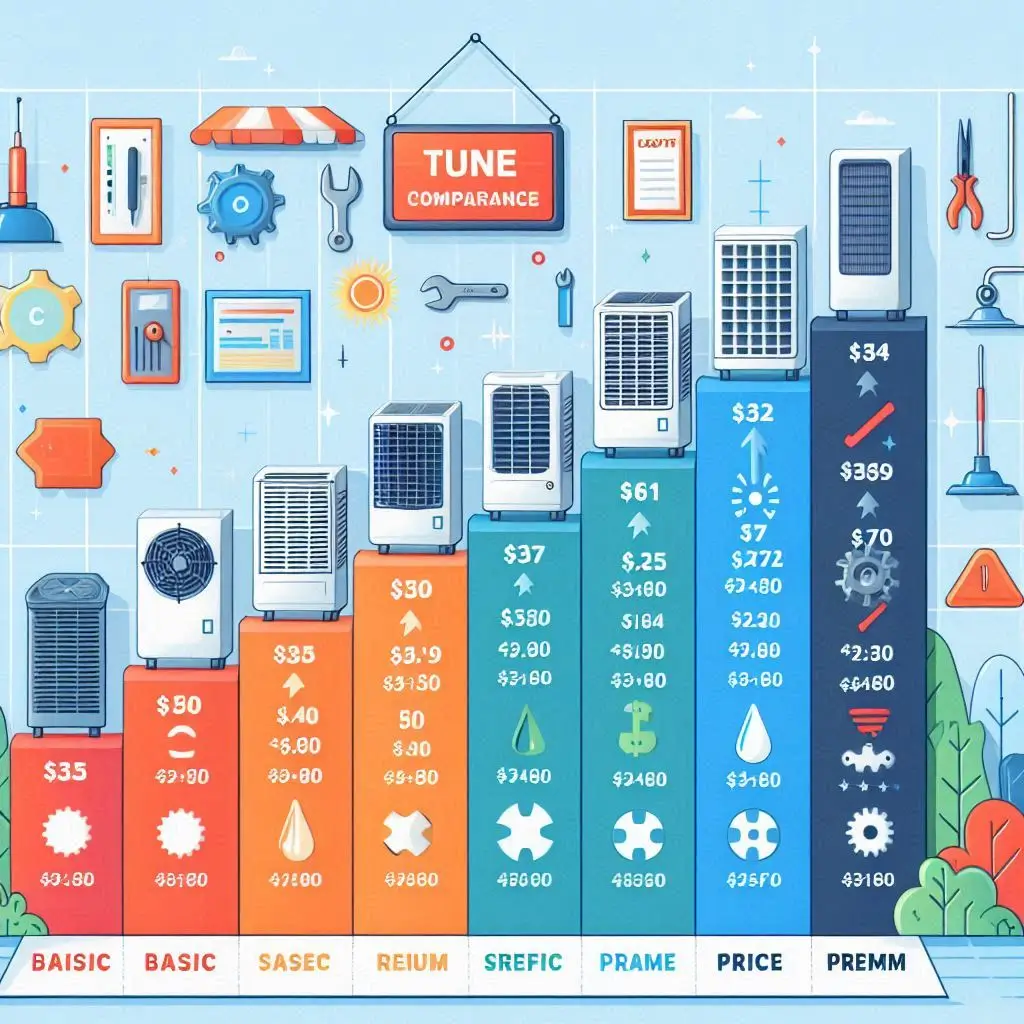
2. Why Is an AC Tune-Up Necessary?
An AC tune-up ensures that your system runs efficiently, reduces energy bills, and prevents expensive repairs. Benefits of regular tune-ups include:
Improved Energy Efficiency – A well-maintained system runs smoothly and consumes less electricity.
Extended Lifespan – Routine maintenance helps prevent early system failure.
Better Indoor Air Quality – Cleaning filters and coils reduces dust and allergens.
Fewer Breakdowns – Catching minor issues early prevents costly repairs.
Skipping regular maintenance can lead to higher energy bills, poor cooling performance, and unexpected breakdowns during peak summer months.
3. How Often Should I Get an AC Tune-Up?
Experts recommend getting an AC tune-up once a year, preferably in the spring before the summer heat arrives.
- Spring Tune-Up: Prepares the AC for peak summer use.
- Fall Tune-Up (for heat pumps): Ensures the system runs efficiently for heating in winter.
Regular tune-ups keep your unit in top condition and help maintain your manufacturer’s warranty.

4. What Is Included in an AC Tune-Up?
A professional AC tune-up includes multiple checks and optimizations:
🔹 Thermostat Calibration – Ensures accurate temperature readings.
🔹 Refrigerant Level Check – Prevents cooling inefficiencies.
🔹 Coil Cleaning – Removes dirt buildup for better airflow.
🔹 Air Filter Replacement – Improves air quality and efficiency.
🔹 Electrical System Inspection – Checks connections for safety.
🔹 Blower Motor & Fan Check – Ensures proper airflow.
🔹 Ductwork Inspection – Detects leaks or blockages.
A premium tune-up may also include deep cleaning, duct sealing, and advanced system diagnostics.
5. Can I Perform an AC Tune-Up Myself?
While homeowners can handle basic maintenance, such as changing air filters and cleaning vents, a full tune-up requires professional expertise.
DIY Tasks: Filter changes, coil cleaning, vent inspections.
Professional Tasks: Refrigerant checks, electrical diagnostics, deep cleaning, and system calibration.
Attempting complex repairs yourself can void warranties, cause damage, or lead to safety hazards. It’s best to leave major tune-ups to licensed HVAC technicians.

6. Do AC Tune-Ups Prevent Costly Repairs?
Yes! Regular tune-ups can prevent expensive AC repairs by catching small issues before they escalate.
🔹 Neglected AC Unit Risks:
- Clogged coils → Causes overworking and overheating.
- Low refrigerant → Leads to poor cooling and compressor failure.
- Faulty wiring → Can cause electrical shorts or fire hazards.
- Dirty filters → Reduces airflow and strains the system.
Routine maintenance reduces the risk of breakdowns, improves efficiency, and saves money in the long run.
7. How Does Seasonal Demand Affect AC Tune-Up Pricing?
Peak season pricing applies during the summer, when AC repair services are in high demand. To save money, schedule your tune-up in the off-season:
Best Time for Discounts: Spring or Fall
Most Expensive Time: Mid-Summer (Emergency Services May Cost More)
Booking early ensures lower pricing and avoids long wait times during the busy season.
8. Does an AC Tune-Up Improve Energy Efficiency?
Absolutely! A well-maintained AC unit operates 10–15% more efficiently, leading to lower utility bills.
- Dirty coils and clogged filters force the AC to work harder.
- Lubricated moving parts and proper refrigerant levels ensure smooth operation.
- Calibrated thermostats prevent overcooling and unnecessary energy use.
A simple tune-up can save hundreds of dollars per year on electricity costs.
9. What Happens If I Skip an AC Tune-Up?
Skipping an AC tune-up can lead to:
Reduced Efficiency – Higher electricity bills.
Frequent Repairs – Small problems worsen over time.
Poor Cooling Performance – Uneven temperatures and weak airflow.
Shortened Lifespan – AC units may fail years earlier without maintenance.
Voided Warranty – Many manufacturers require annual maintenance to maintain coverage.
To avoid costly breakdowns, schedule an AC tune-up at least once a year.
Final Thoughts
Regular AC tune-ups are a smart investment that keeps your system running efficiently, prevents breakdowns, and saves money on repairs.
- Best Time: Spring or Fall
- Typical Cost: $80 – $550
- DIY Maintenance: Filter changes, basic cleaning
- Professional Service: Refrigerant checks, electrical inspections, deep cleaning
Conclusion
An AC tune-up is essential for maintaining efficiency, reducing energy costs, and preventing expensive repairs. Whether you’re considering a basic check-up or a full-service inspection, regular maintenance ensures your system runs smoothly, extends its lifespan, and keeps your home comfortable year-round. While some DIY tasks like changing filters can help, a professional tune-up is necessary to detect and fix potential issues before they become costly problems. To get the best pricing and service, schedule your AC tune-up during the off-season, such as spring or fall. By staying proactive, you can enjoy better cooling performance, improved energy efficiency, and long-term savings on HVAC repairs. Don’t wait for your AC to fail—invest in regular tune-ups and keep your system in top shape!

